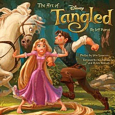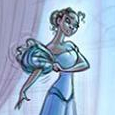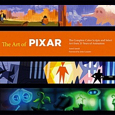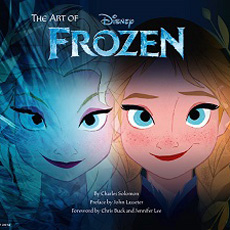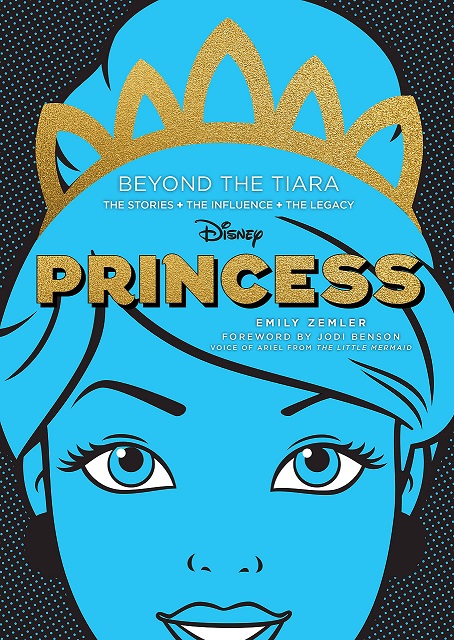 Everyone knows the Disney Princess characters, but how did they become the cultural icons we know today? From the Princesses Walt Disney and his artists brought to the screen in the 20th century, such as Snow White and Aurora, to the recent additions such as Moana, Tiana and Rapunzel, each Disney Princess character’s influence has expanded beyond her original film. Each unique, individual story creates a fabric with the power to inspire our imaginations, spark social conversations, and empower us.
Everyone knows the Disney Princess characters, but how did they become the cultural icons we know today? From the Princesses Walt Disney and his artists brought to the screen in the 20th century, such as Snow White and Aurora, to the recent additions such as Moana, Tiana and Rapunzel, each Disney Princess character’s influence has expanded beyond her original film. Each unique, individual story creates a fabric with the power to inspire our imaginations, spark social conversations, and empower us.
That’s the subject of Emily Zemler’s latest book, Disney Princess: Beyond The Tiara, that looks at the phenomenon from an original angle.
Emily is known for being the author of The Art And Making of Aladdin (2019). She’s a freelance writer and journalist based in London. She is a frequent contributor to the Los Angeles Times and Rolling Stone, among other prestigious outlets. Emily is also the co-author of A Sick Life, with TLC’s Tionne “T-Boz” Watkins.
Organized by themes of origins and inspirations, re-imaginings, toys and collectibles, fashion, music, parks, fandom, and more, the book features memorabilia and interviews with Disney historians, directors, voice talent, and fans. It invites the reader to explore the different eras, influences, and legacies of the Princesses with Disney Legends such as Jodi Benson (voice of Ariel in The Little Mermaid and author of the book’s foreword), Lea Salonga (the singing voice behind two Princesses, Jasmine and Mulan), and composer Alan Menken.
The book is scheduled for September 20, 2022, and we were lucky to be able to chat with Emily in advance about it.
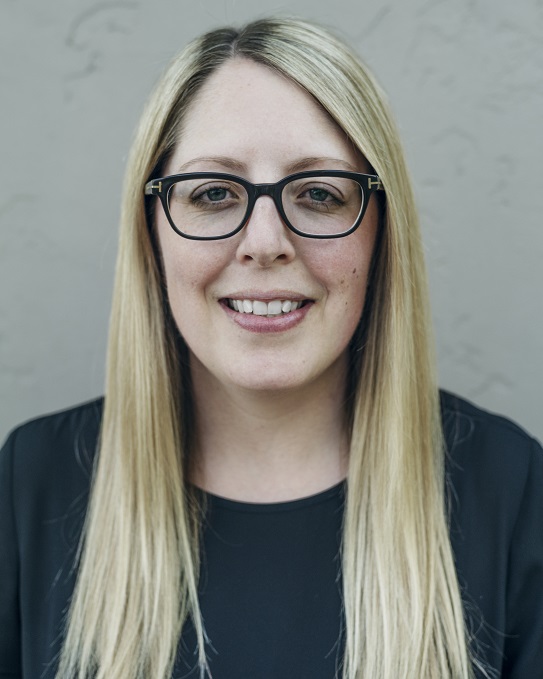
Animated Views: There’s plenty of books on Disney Princesses, how would you explain the concept of yours, and what makes it original?
Emily Zemler: I was actually approached by the publisher to write this book, and at that stage, it was just an idea that they had had, a very small idea: they just wanted to do a book about Disney Princesses from a new angle. So, they gave me this tiny little idea and that was my responsibility to figure out what would that book be. Like you’ve said, there’s a lot of books that have been written on the subject. You have making-ofs on the animated films and on the live-action re-imaginings, but you don’t have books about the cultural legacy of the Disney Princess. What was happening in culture that impacted how they were created? And then how did they impact the culture in which we live? That’s the difference. Other books were maybe looking at the actual animation or how the films were created. This one is looking at why they were created and what they have generated in our culture in terms of fashion and music, etc. In other words, what they have given back to us.
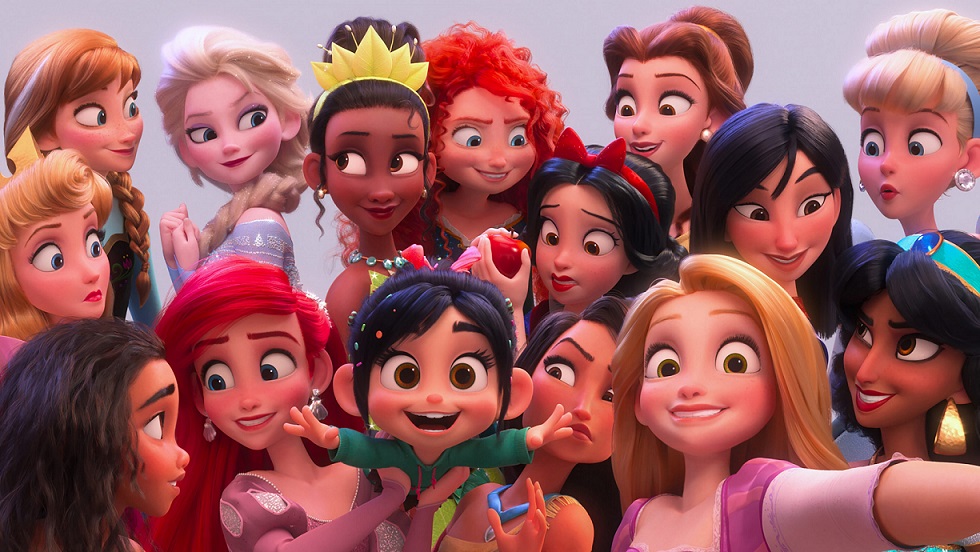
AV: Indeed, your book covers so many different topics, from animated classics to theme parks, to music and lifestyle. How did you organize your research?
EZ: As you can imagine, it was a lot of work! I started it Spring 2021, and the first thing I did was to watch all the films and all the tv series, the sequels and any other version, like in Disney Channel’s Descendants. I watched all of Once Upon A Time. Thank God, there’s Disney+ now! And then I started reading all of the making-of books, I got pdfs from Disney of many books on the subject. The Disney Archives gave me a list of Disney books that they recommended, that I looked for and looked at. For instance, there’s a book about the history of the costumes in Disney films that was very useful. There’s another book about the Disney Princess by Charles Solomon, which is more historical, that looks at, say, what period they have fictionally lived in.
I live in London, so I spent a lot of time at the BFI research library. That was during the pandemic, so that was a little challenging. You couldn’t browse the shelves. You had to stay in your seat and then they would bring you the books. They have quite a lot of the older books, the ones that are harder to find now like The Art Of Pocahontas, which is very expensive if you try to buy it online. I looked at interviews that people had given, and then I started to interview people. That was a very long process. We had about three months of interviews. Some of those were set up by Disney, some were people I already knew.
AV: How did you research about the theme parks?
EZ: The theme parks were tricky, but they had just released a new series on Disney+ called Behind The Attraction. Also, if you google on YouTube, there are tons of making-ofs, little clips that came from different DVDs. So, you can find different things online. Then I did speak with an Imagineer, Charita Carter, who is one of the people responsible for re-imagining Splash Mountain, which is becoming Tiana’s Bayou Adventure. She was really interesting. And then, there was another interesting person I interviewed, Todd Martens, a reporter for the Los Angeles Times, which I also write for, and he writes namely about Disneyland, and his contribution was invaluable. He knows how the attractions changed over the years, why have they changed, and how the Princesses are involved in the parks.
AV: Can you tell me a little bit more about one of your memorable encounters?
EZ: Sure. I did more than 50 interviews, which is quite a lot for a book. They were all great, but I would say that there are two that really stand out to me. One is Jodi Benson, the voice of Ariel, the Little Mermaid, who wrote the foreword of the book. I was born in 1983, so I grew up with the Disney Renaissance films, and The Little Mermaid was my favorite. So, having Ariel call my cell phone was a really surreal moment for me. That was very cool. She is very passionate about her responsibility of being Ariel, what that means. And another one that was really great was Alan Menken, who has also been so important in the Disney Princess stories and films. He’s just a very candid guy. He just tells you things like they are. He’s very open. I found his to be a really great conservation, he gives you sort of that backdoor look at how the songs and the music were made.
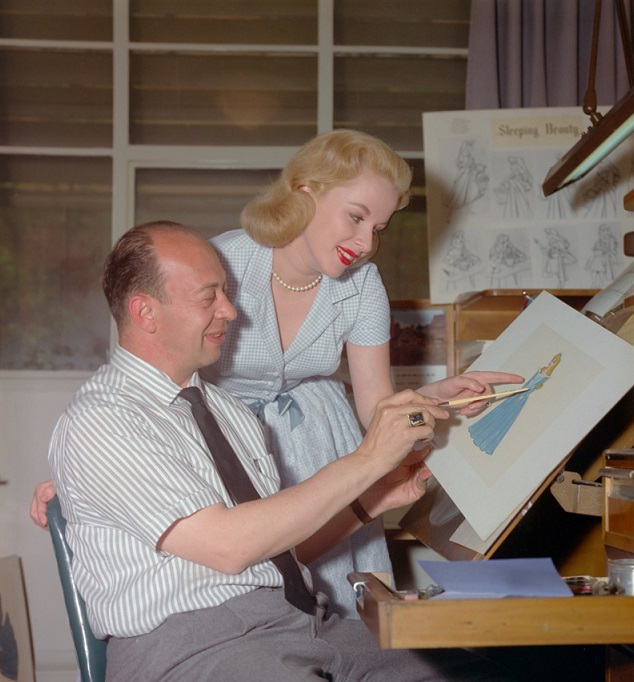
AV: There’s plenty of never seen before pictures of the original, animated Princesses. How did you make your research and your choices, in that regard?
EZ: Actually, we hired a photo researcher, so it was not just me. Her name is Julie Alissi and she’s lovely. I don’t know how she does it, because we had probably thousands of images. The Disney Archives has some images but they don’t have everything photographed. But if you know that something exists, they can have it photographed, like this Mattel toy from 1955. There’s also the Animation Research Library, who have all the stills, the concept art, sketches, original art made by the different animators. And then there’s stuff they don’t have but which we found. In the book, my favorite image is in chapter 3, about the merchandising. When Snow White came out, they made Snow White bleach and Snow White ammonia to clean the home. I found a picture of that on an old blog and our photo researcher was able to track down a usable image. It was months of work. They were still approving up until this year, right before going to the printer.
But the most exciting one is the USPS Princesses stamps collection. That artwork had never been seen before. I found that out because I interviewed a man named Dave Pacheco, who has been really instrumental in the art of the Disney Princess. He’s a creative guy behind the scenes at Disney, and he told me about them, but they were never printed. So, we were able to get copies of the art from archives.
AV: One original chapter is about fashion. It’s rarely treated in matter of Princesses. Can you tell me more specifically about that one?
EZ: That’s my favorite chapter, that’s probably why it’s so original. I was so excited to write it. The original animators, in the early years of Disney, were not fashion designers. It was male designers who needed a beautiful ball gown. They were probably – and this is just a supposition – looking at their wives’ fashion magazines at home and seeing images of Dior’s “New Look”, they would think that would make a beautiful gown for Cinderella. So, Cinderella’s gown looks like Dior’s “New Look” gown from the same time.
So, you could look at the things that were happening in culture at that time and see how they affected what appears on the screen.
Then, as we talk about in the book, there’s a real aspirational quality to a Disney Princess. You want to be her. Whatever she’s wearing, however she appears, you want to be like her. Then, Disney Princess fashion has become part of our culture and whether they say it or not, designers are probably taking some inspiration from what they’ve seen in film. That’s been really true with Cinderella, and you can see it a lot with Belle’s yellow gown, you can see it with Ariel, you can see it with Sleeping Beauty’s pink gown with the points that drew a lot from the costumes of the film Roman Holiday with Audrey Hepburn.
It was really exciting to get Zac Posen speak to me for that chapter, because he designed several Cinderella-inspired gowns. And the idea is that putting on a gown like that allows you to have a royal moment, allows you to be entering into a really special moment the way a Disney Princess would. And I think that’s just a very cool thing to be able to feel, and as you will see in the chapter, it’s not just about women’s fashion. It’s men’s fashion as well, which is even more significant.
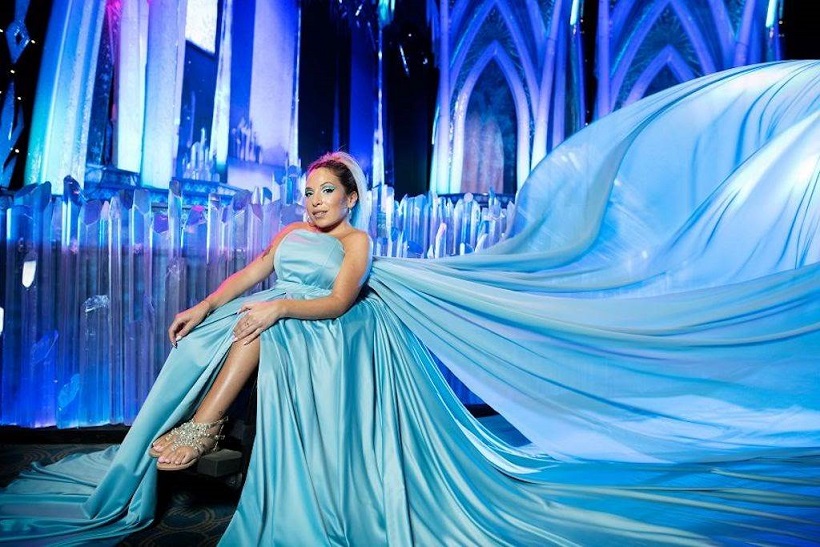
AV: In your introduction, you write that “what we see on screen is always a reflection of the time”. Can you tell me more about that?
EZ: The idea is that what has been made artistically in a particular era is a reflection of our current values and our current ideas. So, in a particular time, like when Snow White And The Seven Dwarfs was made, most women, whether they wanted it to be or not, were housewives. That was the reality of the time. It’s not a judgement of the time; it’s the truth of the time. And it’s why we see Snow White cleaning the house so beautifully and being very kind and gentle. Today, we don’t share the same values. Our values are much more inclusive and you sort of see that play out in the more recent films. Take for instance Moana, that embraces different values and different aspects of how we want to express that through art.
So, when we look back at films like Sleeping Beauty or Snow White And The Seven Dwarfs, we have to take into consideration what was happening in culture. Instead of judging it from our lands, we think about it from the lands of that time. And I think that is what makes these films so interesting, because you can see the evolution of the way we understand female characters on screen.
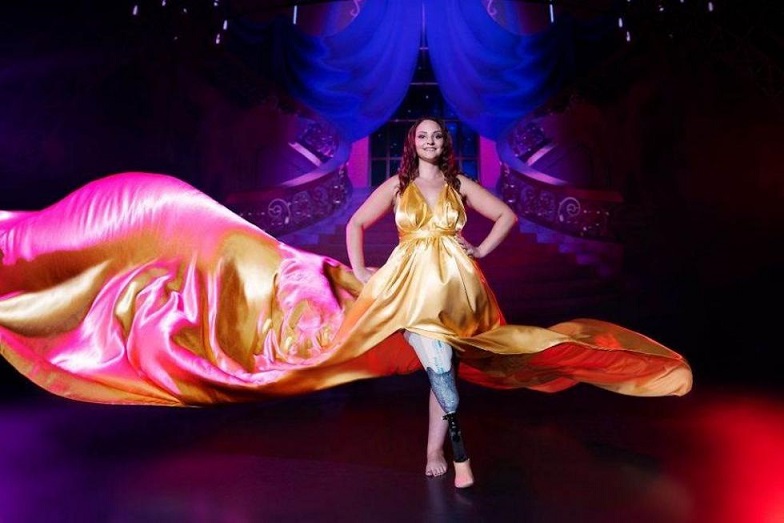
AV: And now, it’s not only about reflection, but also about inspiration. You quote Linda Woolverton saying “We’re changing the culture through storytelling”. Can you tell me about the present-day, influential side of the Disney Princess?
EZ: I think that’s a very important evolution that we’ve been able to see. The early Disney Princesses reflected their time, but as we’ve gone along, starting with Little Mermaid, they’ve changed. She was a very rebellious teenager. The creation of Belle was a very key moment because they made a brunette princess who was very intelligent, who wanted adventure and loved books. That was so popular with people. People felt that they could see themselves and because of how popular Belle was, Disney changed Jasmine. She became feistier and more adventurous, and that moved on to characters like Pocahontas and Mulan, who are very dynamic and adventurous. And more recently, we’ve gotten much more empowered female characters.
That’s something Disney has done very purposely, especially with Jennifer Lee at the helm. I think they want to make sure that what women are seeing is something that they want to become. There’s a very nice quote from Jessica Julius, Vice President of Creative Development at the Walt Disney Animation Studios, saying, “If you can see it, you can be it”. That’s the idea that if you see someone take charge of their destiny and go after their dream in a film, then you feel that you can also do that. It empowers you to do the same. It doesn’t have to be a big, grandiose statement. It can literally be someone being curious and wanting to go out into the world and find themselves, and then you go do that. That’s really important to them. The way they’re presenting the Disney Princess now is that she is adventurous, and she’s kind, and she’s the leader of her own story. She is in charge of her own story. Which is something that has been true of all of them: they all do embrace their own narrative. Moana or Tiana are really putting themselves out there and taking charge of their destiny. They’re not afraid to be who they are. You can also see that in films, more recent films like Encanto or Raya And The Last Dragon. They’re bringing in new cultures. They’re allowing female characters to be leaders and warriors and I think that will probably continue and there will continue to be such an evolution.

AV: That evolution touches not only the people but culture in general.
EZ: Yes. I think that’s a huge responsibility to know that you have that sort of wide-reaching impact on people of all generations and of all backgrounds. That’s a lot to think about. Which I think is why, in more recent animated films, they have taken on board a lot of consultants, a whole trust that was there for the making of Moana, for instance, to help them reflect the reality of their culture.
AV: Just like a Disney Princess, did you learn more about yourself during the process of writing this book?
EZ: I did learn quite a lot! On a more surface level, I learned how to be a better book author and researcher, where to find information, how to distill it all down into a story that makes sense for the readers. It’s really challenging as a writer to get tons of information and have to bring it onto this really narrow path. There are things that have to be left out, and this has to go through many, many approval processes. There are certain things that were cut during those processes. But it was a really enjoyable process for me, and I feel that I’m a much stronger writer and storyteller now.
And on a more personal level, it was just really nice to spend time with these characters. Like we were just saying, it’s very inspiring and empowering to hear about these stories and to see these stories, and so, to spend almost a year living with these characters. I mean, the algorithms of my social media changed – I used to open Instagram and only get memes of Disney Princesses. I was totally immersed in it, thinking about it all the time, and that’s really inspiring. That encourages you to follow in their footsteps and feel empowered in your own life.
With our thanks to Emily Zemler and Mandy Rodgers.





